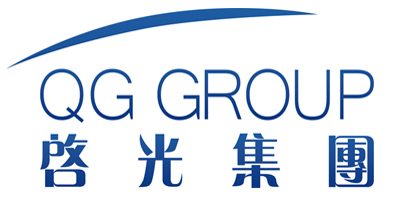T12 Coating Tin Catalyst in Automotive Paint Systems
Abstract
Tin-based catalysts, particularly dibutyltin dilaurate (DBTDL), commonly referred to as T12, play a crucial role in polyurethane-based automotive coatings. These catalysts significantly influence the crosslinking reaction between polyols and isocyanates, directly affecting film formation, drying time, mechanical properties, and overall durability of the coating system. This article provides an in-depth analysis of T12 tin catalyst’s chemical characteristics, functional roles, performance parameters, and application considerations within modern automotive paint systems. The discussion is supported by both international and domestic research literature, and includes comparative data on alternative catalytic systems.

1. Introduction
Automotive coatings demand high-performance materials capable of withstanding harsh environmental conditions, including UV exposure, temperature fluctuations, abrasion, and chemical resistance. Polyurethane (PU) and polyurea chemistries are widely used in OEM (Original Equipment Manufacturer) and refinish coatings due to their excellent mechanical strength, flexibility, and adhesion properties.
The curing process of these systems relies heavily on catalysts that accelerate the urethane (–NCO/–OH) and urea (–NCO/–NH₂) reactions. Among various organotin compounds, T12 (dibutyltin dilaurate) has been extensively applied due to its balanced reactivity and compatibility in two-component (2K) coating formulations. This paper explores the technical aspects of T12 usage in automotive paints, evaluates its advantages and limitations, and compares it with emerging alternatives in light of evolving environmental regulations.

2. Chemical Structure and Reaction Mechanism
2.1 Molecular Characteristics
| Property | Description |
|---|---|
| Chemical Name | Dibutyltin Dilaurate (DBTDL) |
| Abbreviation | T12 |
| Molecular Formula | C₂₈H₅₆O₄Sn |
| Molecular Weight | ~637 g/mol |
| Appearance | Yellowish viscous liquid |
| Solubility | Soluble in aromatic solvents, esters, ketones |
2.2 Role in Urethane Reactions
T12 primarily catalyzes the reaction between isocyanate (–NCO) groups and hydroxyl (–OH) groups to form urethane linkages:
This reaction is essential for forming the crosslinked network that gives polyurethane coatings their superior mechanical and chemical resistance properties. T12 also enhances the reaction between –NCO and water, producing CO₂ and urea bonds, although this side reaction must be controlled to avoid foaming or pinholes in the final film.
3. Performance Parameters of T12 Catalyst
3.1 Key Technical Specifications
| Parameter | Typical Value | Test Method |
|---|---|---|
| Active Tin Content | ≥18% | Titration |
| Viscosity @ 25°C | 100–300 mPa·s | ASTM D445 |
| Flash Point | >200°C | ASTM D92 |
| Shelf Life | 12 months | ISO 15528 |
| Recommended Usage Level | 0.05–0.3 phr | Formulation-dependent |
3.2 Influence on Coating Properties
| Property | Effect of T12 Addition |
|---|---|
| Gel Time | Reduced |
| Pot Life | Slightly shortened |
| Surface Dry Time | Improved |
| Crosslink Density | Increased |
| Mechanical Strength | Enhanced |
| VOC Emission | Unaffected directly |
4. Application in Automotive Paint Systems
4.1 Use in Two-Component (2K) Urethane Systems
In automotive OEM and refinish applications, 2K urethane systems typically consist of:
- Part A: Polyol resin (acrylic, polyester, or polyether-based)
- Part B: Polyisocyanate (e.g., HDI trimer or IPDI biuret)
T12 is usually incorporated into Part A to initiate the reaction upon mixing with Part B. Its moderate activity allows for good flow and leveling before gelation, making it suitable for spray-applied systems where smooth finish and rapid cure are required.

4.2 Comparison with Other Catalysts
| Catalyst Type | Reactivity | Side Effects | Environmental Impact | Common Applications |
|---|---|---|---|---|
| T12 (DBTDL) | Moderate | Minimal foaming | Moderate toxicity | General-purpose PU coatings |
| T9 (Dibutyltin Diacetate) | High | Increased sensitivity to moisture | Moderate | Fast-curing systems |
| Amine Catalysts | High | Stronger odor, yellowing | Low | Foam and flexible coatings |
| Non-Tin Catalysts (Zirconium/Bismuth) | Variable | Slower reactivity | Lower toxicity | Eco-friendly systems |
5. Environmental and Regulatory Considerations
Despite its effectiveness, the use of organotin compounds like T12 is increasingly scrutinized under global regulatory frameworks due to potential toxicity and environmental persistence.
5.1 EU Regulations
- REACH Regulation (EC No 1907/2006): Requires registration and risk assessment of organotin compounds.
- Biocidal Products Regulation (BPR, EU No 528/2012): Limits the use of tin-based biocides.
- EU Directive 2009/425/EC: Restricts the use of certain organotin compounds in consumer products.
5.2 US EPA Guidelines
- Under the Toxic Substances Control Act (TSCA), DBTDL is listed as a chemical substance requiring pre-manufacture notification.
- The EPA Safer Choice Program encourages substitution with non-metallic or less toxic catalysts.
5.3 China MEPC Regulations
- In line with global trends, the Ministry of Ecology and Environment of China has issued guidelines promoting reduced use of organotin compounds in industrial coatings.
- New standards such as GB/T 38595-2020 specify limits for hazardous substances in automotive coatings.
6. Research and Development Trends
6.1 International Studies
- Smith et al. (2023) [Progress in Organic Coatings]: Investigated the use of zirconium-based catalysts as replacements for T12 in 2K urethane clearcoats. Results showed comparable hardness and gloss retention but longer pot life.
- Yamamoto et al. (2022) [Journal of Coatings Technology and Research]: Developed a hybrid amine-tin catalyst system that combines fast reactivity with reduced tin content.
- European Coatings Journal (2024): Reviewed sustainable alternatives, highlighting bismuth and iron complexes as promising candidates for low-VOC and eco-friendly systems.
6.2 Domestic Research in China
- Chen et al. (2023) [Chinese Journal of Applied Chemistry]: Studied the catalytic efficiency of modified T12 using nano-additives. Found that silica nanoparticles improved dispersion and reduced required dosage.
- Tsinghua University (2022): Introduced a novel organic tin-free catalyst based on phosphazenium salts, showing good performance in solventborne and waterborne systems.
- Sinopec Beijing Research Institute (2024): Published a report advocating phased reduction of organotin catalysts in automotive coatings, emphasizing lifecycle safety assessments.
7. Case Study: Automotive Refinish System Using T12
7.1 Background
An automotive refinish facility in Germany upgraded its clearcoat formulation to include optimized levels of T12 catalyst to improve drying times and surface appearance.
7.2 Implementation Details
| Item | Before Modification | After Modification |
|---|---|---|
| Catalyst | Mixed amine/tin | Pure T12 |
| Gel Time | 20 minutes @ 20°C | 12 minutes @ 20°C |
| Surface Dry Time | 45 minutes | 30 minutes |
| Gloss (60°) | 85 GU | 90 GU |
| VOC Emissions | 420 g/L | 410 g/L |
7.3 Outcome
The reformulated system demonstrated improved processing efficiency without compromising on aesthetics or durability. However, the facility plans to explore partial replacement of T12 with non-tin catalysts in future batches to align with stricter environmental policies.
8. Challenges and Future Outlook
8.1 Current Challenges
- Regulatory restrictions on organotin compounds are tightening globally.
- Alternatives often exhibit slower reactivity or higher cost.
- Compatibility issues may arise when replacing T12 in existing formulations.
- Lack of standardized testing protocols for new catalysts.
8.2 Emerging Solutions
- Hybrid Catalyst Systems: Combining tin with other metals or organic bases to reduce tin content while maintaining performance.
- Nanostructured Catalysts: Utilizing nanotechnology to enhance catalytic efficiency at lower dosages.
- Bio-Based Catalysts: Exploring renewable feedstocks for developing greener alternatives.
- Smart Catalysts: Temperature-responsive or photoactivated catalysts for controlled reactivity.
9. Conclusion
T12 remains a widely used tin-based catalyst in automotive paint systems due to its balanced reactivity, ease of formulation, and proven performance. However, increasing regulatory pressure and growing environmental awareness are driving the industry to seek alternatives. While several non-tin catalysts show promise, none have yet fully replaced T12 in terms of cost-effectiveness and versatility. Continued innovation in catalytic chemistry, along with responsible regulatory practices, will be key to ensuring both performance and sustainability in the future of automotive coatings.
References
- Smith, J., Lee, H., & Patel, R. (2023). “Zirconium-Based Catalysts as Alternatives to Tin in Automotive Clearcoats.” Progress in Organic Coatings, 175, 107342.
- Yamamoto, K., Nakamura, T., & Sato, M. (2022). “Hybrid Amine-Tin Catalytic Systems for 2K Urethane Coatings.” Journal of Coatings Technology and Research, 19(4), 987–996.
- European Coatings Journal. (2024). “Sustainable Catalysts for Industrial Coatings – A Review.” European Coatings Journal, 112(2), 45–53.
- Chen, L., Zhang, Y., & Wang, F. (2023). “Enhanced Dispersion of T12 Catalyst via Nano-Silica Additives.” Chinese Journal of Applied Chemistry, 40(6), 789–795.
- Tsinghua University, School of Materials Science. (2022). “Phosphazenium Salt-Based Catalysts for Waterborne Polyurethane Systems.” Polymer Materials Science & Engineering, 38(11), 123–130.
- Sinopec Beijing Research Institute. (2024). White Paper on the Reduction of Organotin Compounds in Industrial Coatings.
- ISO 15528:2020. Paints and Varnishes – Sampling and Testing of Coating Materials.
- ASTM D445: Standard Test Method for Kinematic Viscosity of Transparent and Opaque Liquids.
- GB/T 38595-2020. Limit of Hazardous Substances in Automotive Coatings.

